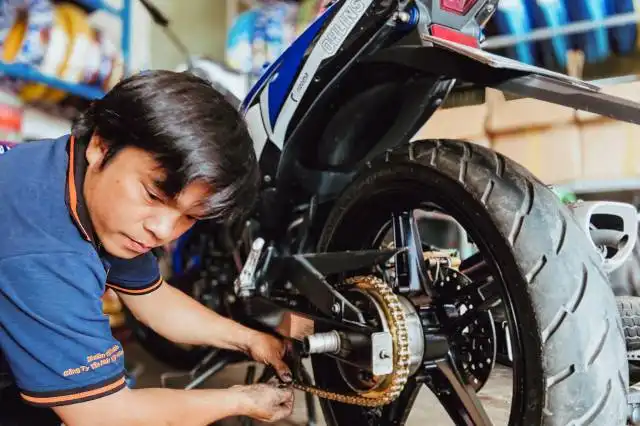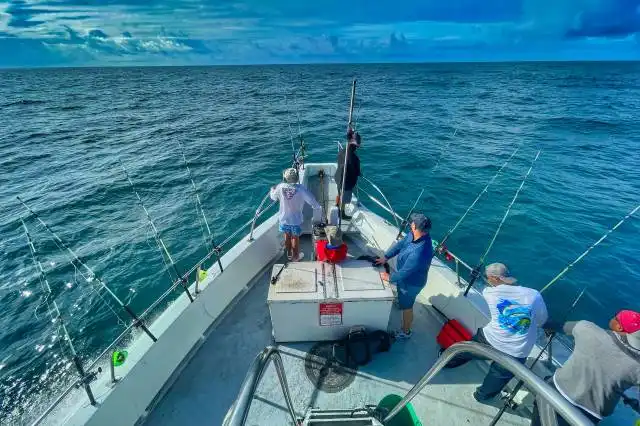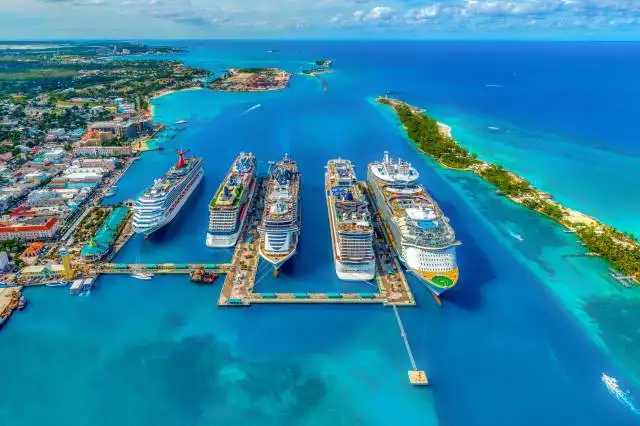Start a Bike Tour Company
Cycling towards Success: Your Profitable Biking Venture
| Updated


BIKE TOUR COMPANY
Get ready to pedal your way into profits with a Bike Tour Company! This eco-friendly initiative allows you to couple your love for fitness and tourism into a thriving business. With your company, you offer guided cycling tours around city landmarks, nature trails, or even historically significant sites. As the biking pioneer, you'll be spreading your passion for two wheels while helping tourists experience attractions in an invigorating and engaging way.
Jump to Business Plan
RELATED BUSINESS IDEAS
Browse ALL Hospitality & Leisure Ventures Business Ideas
Discover Your Perfect Domain
Unlock the door to your online success with our hand-picked selection of premium domain names. Whether you're starting a new venture or rebranding an existing one, the right domain can set the tone for your digital presence. Browse through our curated list, each with its unique potential to enhance your brand's visibility and credibility.
BIKE TOUR MINI BUSINESS PLAN
This a quick reality check to help you identify the strengths and weaknesses of your business concept before you dive in.
Expected Percent Margin:
- Gross Margin: 65-75% (after direct costs of bike maintenance, tour guide salaries)
- Net profit Margin: 20-30% (after all operating costs)
Earnings Expectations:
- Daily Earnings: $300 - $500 (Based on 10-15 tours; price per tour can be between $30-$35)
- Weekly Earnings: $2,100 - $3,500 (Working 7 days)
- Monthly Earnings: $9,000 - $15,000
- Annual Earnings: $108,000 - $180,000
Note: Seasonality can significantly affect these numbers, as bike tours are likely more popular in warmer seasons. Ensure to budget for some slower months.
Actions to Hit Those Numbers:
Bike Maintenance:
- Initial Investment: Aim for at least 15-20 quality bicycles and related safety gear to commence.
- Maintenance: Set aside a portion of revenue for regular upkeep and potential replacement of bikes.
Marketing and Tour Booking:
- Online Presence: Set up a user-friendly website and leverage social media to showcase the unique aspects of your tours.
- Partnerships: Form partnerships with local hotels, tourist attractions, and event organizers to promote your tours.
Tour Guide Training and Management:
- Hiring: Employ knowledgeable, engaging guides who are trained in first aid and bike maintenance.
- Training: Regularly train your guides around local history, flora, fauna, and notable landmarks.
Compliance and Insurance:
- Permits: Ensure to have all the necessary permits for the routes your tour covers.
- Insurance: Maintain a generous insurance policy to cover any potential accidents/injuries.
These figures are approximate and will vary depending on your location, the length and type of tours you offer, and other market factors. Please conduct a thorough budgeting and planning process before starting your venture.
NOT WHAT YOU HAD IN MIND? Here are more ideas



Browse ALL Hospitality & Leisure Ventures Business Ideas
Grab Your Business Website Name
Before you get caught up in the whirlwind of setting up your business, invest in a domain name. It's a small but significant step that lays the foundation for your brand and makes it easier for customers to find and trust you. Just like you wouldn't build a house without securing the land first, don't build a business without securing your domain name.
"Why? Can't that wait?" Here's why it shouldn't
Step 1: Determine if the Business is Right for You
Breakdown of Startup Expenses
Before starting a bike tour company, it is important to understand the startup costs associated with the business. This includes the cost of the bikes and other equipment, the cost of any necessary permits, and the cost of any marketing materials. Additionally, the cost of any insurance, such as liability and health insurance, should be taken into account. It is important to research the costs associated with starting a bike tour business in order to ensure that the business is financially feasible.
Breakdown of Ongoing Expenses
In addition to startup expenses, it is important to understand the ongoing expenses associated with running a bike tour company. This includes the cost of maintaining the bikes and other equipment, the cost of any permits that may need to be renewed, and the cost of any marketing materials that may need to be updated. Additionally, the cost of any insurance, such as liability and health insurance, should be taken into account. It is important to research the costs associated with running a bike tour business in order to ensure that the business is financially feasible.
Examples of Ways to Make Money
There are several ways to make money with a bike tour company. The most common way to make money is to charge customers for the tour. This can be done by charging a flat fee for the tour, or by charging a per-person fee. Additionally, bike tour companies can make money by offering additional services, such as bike rentals, bike repairs, and bike accessories. Finally, bike tour companies can make money by partnering with local businesses to offer discounts or other incentives to customers.
Step 2: Name the Business
When it comes to naming a business, it is important to choose a name that is memorable and that reflects the type of business you are running. Brainstorm a list of potential names that could work for your bike tour company. Consider the type of tours you will be offering, the locations you will be visiting, and the type of customers you will be targeting. Once you have a list of potential names, research the availability of the names to make sure that they are not already taken. Additionally, you should research the domain name availability for each potential name to make sure that you can secure a website domain with the name. It is also important to consider the potential for trademarking the name of your business, as this will help protect your business from being copied by competitors.
Step 3: Establish a Business Plan
Outline Goals and Objectives
When establishing a business plan, it is important to outline the goals and objectives of the business. This should include the type of bike tours the company will offer, the target market, and the expected profit. Additionally, it is important to set a timeline for the business to reach its goals. This could include a timeline for when the business will be established and when it will be profitable.
Establish a Budget
The next step in establishing a business plan is to establish a budget. This should include a breakdown of startup expenses such as the cost of equipment, marketing, and legal fees. Additionally, it is important to include a breakdown of ongoing expenses such as insurance, taxes, and employee wages. It is important to be realistic when creating a budget and to ensure that the budget is achievable.
Identify Target Market
The final step in establishing a business plan is to identify the target market. This should include the type of customer the business wants to attract and the type of tours the business will offer. Additionally, it is important to identify the geographic area the business will target. This could include a specific city, state, or region. It is also important to consider the type of customer the business will attract and the types of tours that will be offered. This could include tours for families, couples, or individuals.
Step 4: Obtain Licenses and Permits
Research Local and State Requirements
Before applying for any licenses or permits, it is important to research the local and state requirements for starting a bike tour company. Depending on the location, there may be different requirements for registering a business, obtaining a business license, and obtaining permits for operating a business. It is important to research these requirements thoroughly to ensure that all necessary licenses and permits are obtained. Additionally, it is important to research any regulations or restrictions that may apply to bike tour companies in the area.
Apply for Necessary Licenses and Permits
Once the research is complete, it is time to apply for the necessary licenses and permits. Depending on the location, this may involve registering the business with the local government, obtaining a business license, and obtaining permits for operating a business. The process for obtaining these licenses and permits can vary from location to location, so it is important to research the specific requirements for the area. Additionally, it is important to be aware of any fees associated with obtaining the necessary licenses and permits. Once all the necessary licenses and permits are obtained, the business is ready to move on to the next step.
Step 5: Secure Funding
Explore Funding Options
Before you can start your bike tour company, you need to secure funding. This means exploring all of the available funding options. You may need to apply for a loan from a bank or other financial institution, or you may need to seek out investors. You should also consider crowdfunding as an option. Research all of the available options and decide which one is best for your business.
Create a Pitch Deck
Once you have chosen the funding option that is right for you, you need to create a pitch deck. This is a presentation that you will use to present your business plan to potential investors or lenders. Your pitch deck should include an overview of your business plan, a detailed financial plan, and a description of the potential return on investment. It should also include a timeline of when you expect to launch your business and when you expect to start making a profit. Make sure your pitch deck is professional and well-researched.
Step 6: Purchase Equipment
Research Bike Tour Suppliers
Before purchasing any equipment, it is important to research bike tour suppliers to find the best deals and quality products. Look for suppliers that offer a variety of products, from bikes to helmets to repair kits. Consider the cost of each item and the shipping costs associated with each supplier. Make sure to read customer reviews and compare prices to ensure you are getting the best value for your money.
Purchase Necessary Equipment
Once you have identified the necessary equipment, it is time to purchase it. Consider the type of bike tours you will be offering and the number of people you will be accommodating. Make sure to purchase enough bikes, helmets, and repair kits for each tour. Additionally, consider purchasing additional items such as water bottles, bike locks, and first aid kits. It is important to purchase quality equipment that is safe and reliable.
Step 7: Market the Business
Create a Website
The seventh step in starting a bike tour company is to create a website. This website should include information about the company, the services offered, and contact information. It should also include a booking system, so customers can easily book tours online. Additionally, the website should have a blog section, where customers can read about the company’s experiences and get tips for their own bike tours. It is also important to have a strong online presence, so customers can easily find the website and learn more about the company.
Utilize Social Media
Social media is a great way to market a bike tour company. Platforms like Facebook, Instagram, and Twitter can be used to post pictures and stories from the tours, as well as to promote upcoming tours. Additionally, these platforms can be used to engage with customers and answer any questions they may have. It is also important to use hashtags to make sure the posts are seen by the right people.
Develop a Network
Developing a network is also important for marketing a bike tour company. This includes connecting with other businesses in the tourism industry, such as hotels, restaurants, and bike shops. This can help to create partnerships and collaborations, which can lead to more customers. Additionally, it is important to attend events and conferences related to the tourism industry, as this can help to make connections and build relationships.
Step 8: Develop a Team
Hire Employees
Once the business is up and running, it is important to hire employees to help manage the day-to-day operations. It is important to hire employees who are knowledgeable about the bike tour industry and have the necessary skills to help run the business. Additionally, it is important to ensure that the employees have the necessary certifications and licenses to operate the business.
Train Employees
Once the employees are hired, it is important to provide them with the necessary training to ensure that they are able to perform their duties. This includes training on the bike tour industry, customer service, and safety protocols. Additionally, it is important to provide employees with the necessary tools and resources to help them succeed in their roles. This may include providing them with access to online resources, such as webinars and tutorials, to help them stay up-to-date on the latest trends in the bike tour industry.
Step 9: Launch the Business
Finalize Business Plan
Before launching the business, it is important to finalize the business plan. This should include a detailed budget and financial projections, a marketing plan, and a plan for operations. It is also important to research the legal requirements for starting a business in the area. This may include obtaining licenses, permits, and insurance.
Open for Business
Once the business plan is finalized, the company can open for business. This may include setting up a website, creating social media accounts, and advertising the business. It is also important to create a customer service plan and to have a plan for handling customer complaints. Additionally, it is important to create a system for tracking and managing customer data. Finally, it is important to create a system for tracking and managing inventory.
EXPLORE MORE CATEGORIES
Browse ALL Business Idea Categories
TAKE THE NEXT STEPS









